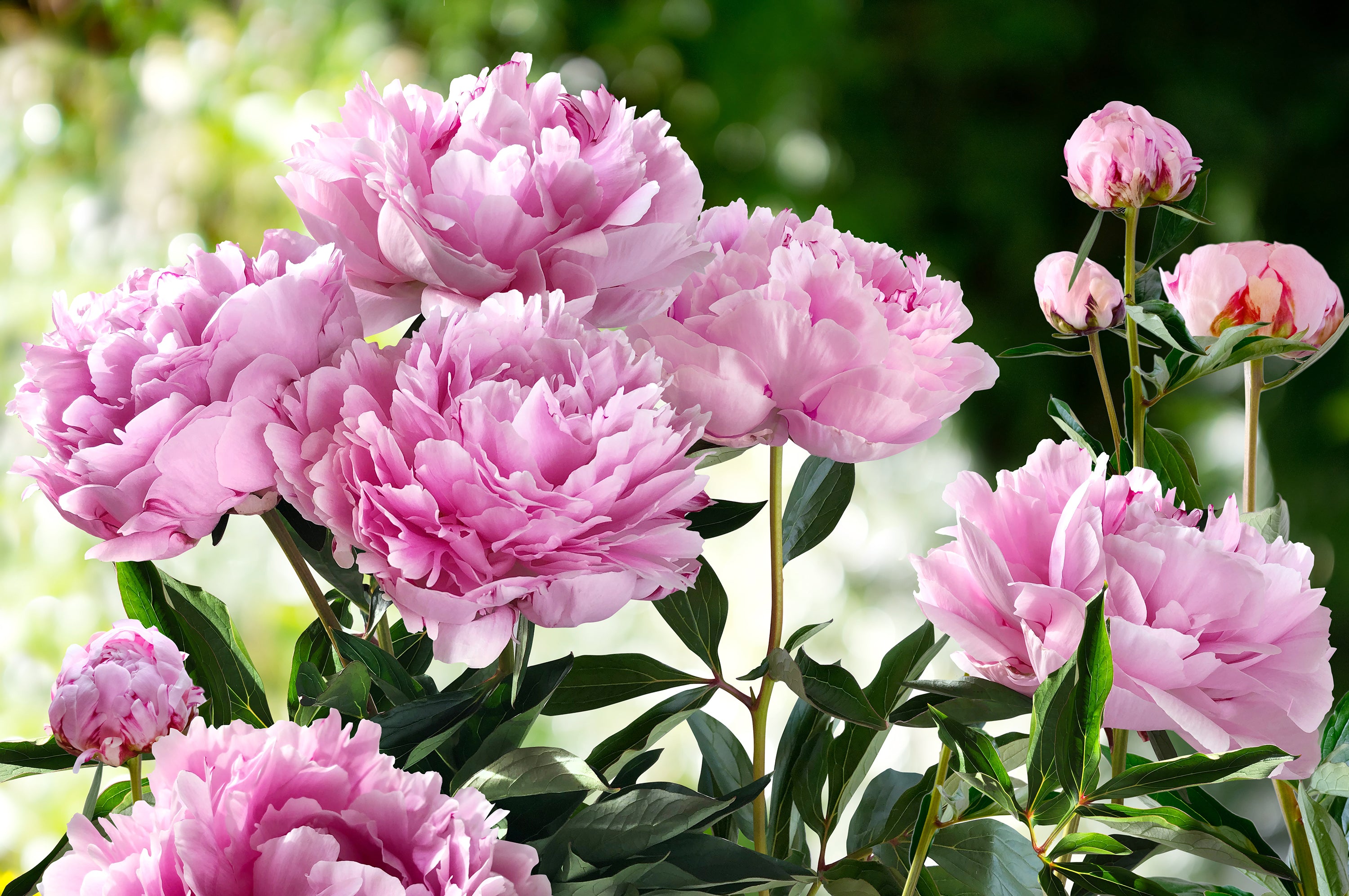A perennial favorite in cut flower gardens, peonies will take your breath away with their large, extravagant blooms that return year after year.
While gardeners used to be limited to just three peony choices: white, crimson, and rose pink, today there are thousands of varieties available on the market! There are six peony flower types to choose from: anemone, single, Japanese, semi-double, double, and bomb. Fragrances vary as well—some plants, such as ‘Festiva Maxima’ and ‘Duchesse de Nemours’ have intoxicating rose-like scents, while others are lemony or have no scent at all.
Care Information
Planting
While peonies are not exceptionally picky, be mindful of choosing your location. They do not like disturbance and do not transplant well.
Peonies like full sun, and though they can manage with half a day, they bloom best in a sunny spot that gets 6 to 8 hours of sunlight each day.
Provide shelter from strong winds, as peonies’ large blooms can make them top-heavy. Use stakes to hold them up, if necessary. Don’t plant too close to trees or shrubs, as peonies don’t like to compete for food, light, and moisture.
Grow peonies in deep, fertile, humus-rich, moist soil that drains well. Soil pH should be neutral.
When planting a container-grown peony, cover it no deeper than it grew in the pot and water thoroughly after placing in the ground.
General Care
Unlike most perennials, peonies don’t need to be dug and divided every few years.
Spare the fertilizer. Work the soil well before you plant, mixing in compost and a little fertilizer, and that should be enough.
If your soil is poor, apply fertilizer (bonemeal, compost, or well-rotted manure) is early summer, after the peonies have bloomed and you have deadheaded the flowers. Don’t fertilize more than every few years.
Help the stems. If peonies have any structural weakness, their stems are sometimes not strong enough to support their gigantic blossoms. Consider three-legged metal peony rings or wire tomato cages that allow the plant to grow through the center of the support.
Deadhead peony blossoms as soon as they begin to fade, cutting to a strong leaf so that the stem doesn’t stick out of the foliage.
Fall Care
After peonies leaves begin to fade, side-dress plants with a balanced, slow-release fertilizer; avoid fertilizing with high nitrogen.
After frost, the foliage will die back completely. Cut the plant to the ground in the fall to avoid overwintering diseases.
Don’t smother peonies with mulch. Where cold temperatures are severe, for the first winter after planting, mulch VERY loosely with pine needles or shredded bark. Remove mulch in the spring.
While peonies do not need to be divided like other plants, fall is a good time to divide or transplant if your plants are too large. Remove the leaves, then dig around the plant’s roots in a large circle, and lift. If dividing, ensure a new section has at least 3 to 5 eyes. Replant.
Extra Tips
Peonies make wonderful cut flowers, lasting more than a week in a vase. For best results, cut long stems in the morning when the buds are still fairly tight.
You can wrap freshly cut peony stems in a damp paper towel and put them in a plastic bag in the refrigerator until you’re ready to use them. When removing the peonies from the refrigerator, give the stems a fresh cut and place them in lukewarm water to wake them up.
Intersectional Peonies
Intersectional peonies are a relatively new class of Paeonia created by crossing herbaceous garden types with woody tree types. They are often called “Itoh Peonies” because the original cross was first made successfully by Japanese nurseryman Mr. Toichi Itoh in 1948.
Intersectional Peonies offer the best qualities of both garden and tree peonies combined including:
- Very large, tree peony-like flowers in colors not previously seen in herbaceous types
- Healthy, herbaceous foliage similar to tree peonies but with a robust, bushy habit that does not require staking
- Strong, herbaceous stems that hold the flowers upright even after a heavy rain; makes a better landscape plant than older herbaceous peonies
- A longer bloom time due to additional flowers being produced on side shoots
- Extreme winter hardiness like herbaceous types but with increased vigor
Varieties include Bartzella, Coral Charm, Henry Bockstoce, Pink Hawaiian Coral, Raspberry Sunday, and Wladyslawa.
